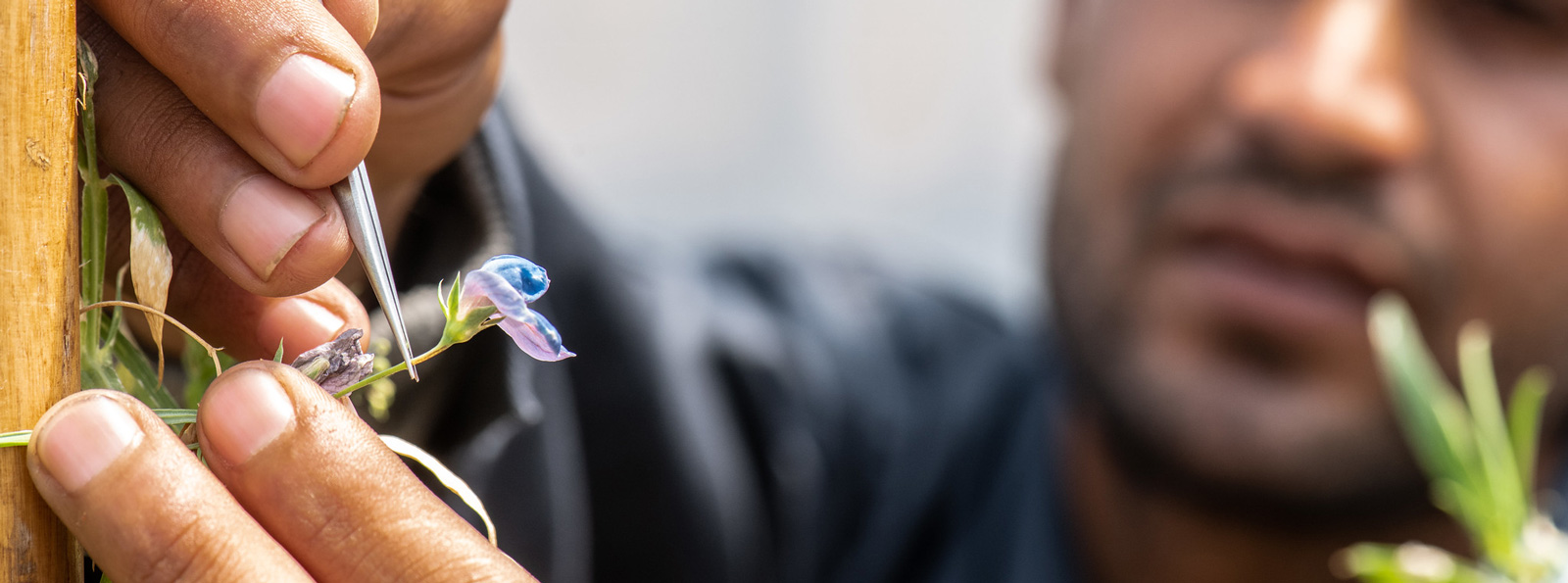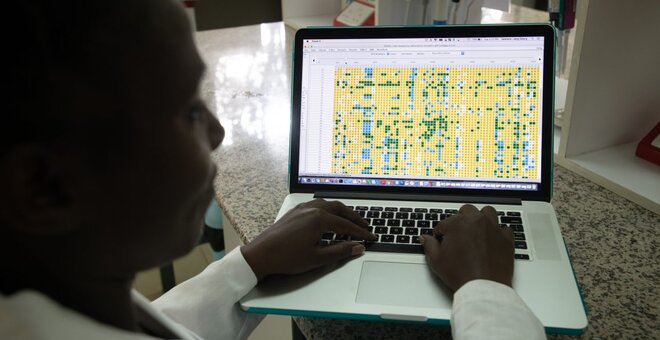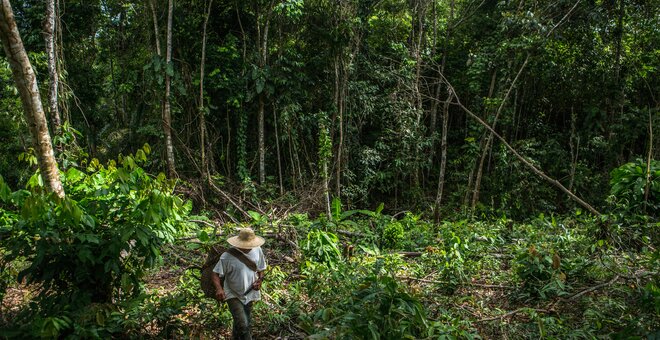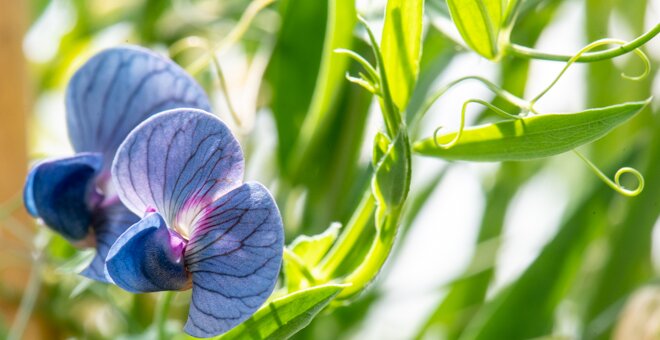The Templeton Pre-Breeding Project
Start year: 2019
The project, “Safeguarding crop diversity for food security: Pre-breeding complemented with Innovative Finance,” funded by the Templeton World Charity Foundation, Inc., builds on the work of the Crop Wild Relatives Project to connect breeders with the genetic diversity they need to improve grasspea and finger millet. It also explores innovative avenues for funding to contribute to the further development of the Crop Trust’s Endowment Fund.
The project, “Safeguarding crop diversity for food security: Pre-breeding complemented with Innovative Finance,” funded by the Templeton World Charity Foundation, Inc., includes two mutually reinforcing elements: pre-breeding grasspea and finger millet using diverse genetic resources, including crop wild relatives (CWR) and landraces; and exploring innovative and sustainable finance mechanisms to safeguard crop diversity in perpetuity.
The two crops are important for food security in a wide range of developing countries.
Grasspea—a crop with promise but problems
Grasspea is a food and forage crop highly valued in southern Asia and parts of sub-Saharan Africa and the Mediterranean region. This nutrient-rich legume is useful for adaptation to climate change because of its tolerance to drought, waterlogging and salinity. However, when eaten as a large part of the diet over a three-month period (which is often the case during famine) it can permanently paralyze adults from the knees down and cause brain damage in children, a disorder named lathyrism. It is also highly susceptible to an aggressive parasitic weed, broomrape. These two characteristics limit its usefulness in farming systems particularly in the Mediterranean region.
The project has produced genetic maps of the crop and is developing new CWR-derived varieties of grasspea that contain less of the neurotoxin found in common farmers’ varieties and that have good resistant to broomrape.
Finger millet—hardy but low yielding
Finger millet is a hardy crop that is well-adapted to arid areas in Africa and Asia. Its small and tough grain is easily stored and is a reliable food source in times of drought and crop failure. Itis also more nutritious than many other cereal staples. However, it is generally susceptible to diseases such as blast and relatively low yielding, which reduces its attractiveness to farmers.
The project is crossing CWR and farmers’ preferred to produce new varieties with better disease resistance and greater yield. This work also draws on genetic fingerprinting to identify the best parental material and to guide breeding work.
And finding new ways to pay for this all
The second component of the project is exploring innovative financing, such as member-country loans, food security bonds, crowdsourcing and crop-based fundraising. The goal is to produce a set of clear recommendations that will detail which mechanisms are the most promising.

This project is using exciting new methods and tools, like speed breeding and genomics, to revolutionize the breeding of improved varieties of neglected crops, which will get climate-smart crops into the hands of smallholder farmers more quickly.
Partners
- International Crops Research Institute for the Semi-Arid Tropics (ICRISAT), Nairobi
- Ethiopian Institute of Agricultural Research (EIAR), Melkassa Station, Ethiopia
- Kenya Agricultural and Livestock Research Organization (KALRO), Kenya
- The Department for Research Development (DRD), Tanzania
- National Semi Arid Resources Research Institute (NaSARRI), Uganda
- James Hutton Institute (JHI), United Kingdom
Supporters
- Templeton World Charity Foundation, Inc.
Related News
Accessible Software for Accessible Seeds
As any plant breeder and researcher will tell you, it’s all about the data. It’s the data that allows them to make smart choices about the crops they breed, speeding up the process of getting new varieties into farmers’ fields and...
25 May 2022
Crop Trust Finance Director Janet Muir on Sustainable Finance Solutions at GLF Climate
The Crop Trust's Director of Finance, Janet Muir, delivered a keynote speech at the 5th Investment Case symposium of the 2021 Global Landscape Forum Climate Conference "Food, Forests, Finance" about innovative and sustainable...
9 Nov 2021
9 Nov 2021
Fast-Tracking Food Security Using Space Science
Plant breeders developing new crop varieties are finding success after shifting their gaze from the fields to the stars.
Scientists at the International Center for Agricultural Research in the Dry Areas (ICARDA) in Rabat,...
7 Apr 2021
7 Apr 2021




